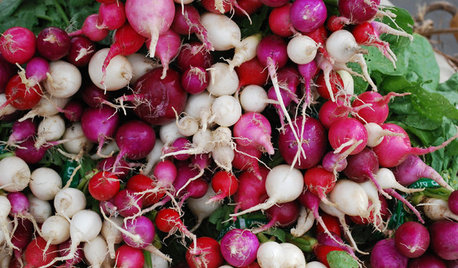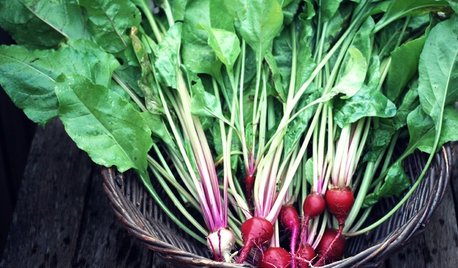Recommendations for soil conditioners for vegetable patch
jbrickm
14 years ago
Related Stories

GARDENING GUIDESInvite Cellophane Bees to Your Garden by Providing Patches of Bare Soil
Look for cellophane bees (Colletes) pollinating flowering trees and shrubs in U.S. gardens this spring
Full Story
GARDENING GUIDESHow to Stop Worrying and Start Loving Clay Soil
Clay has many more benefits than you might imagine
Full Story
MOST POPULAR5 Ways to Hide That Big Air Conditioner in Your Yard
Don’t sweat that boxy A/C unit. Here’s how to place it out of sight and out of mind
Full Story
MOST POPULARHow to Start a Cool-Season Vegetable Garden
Late summer and late winter are good times to plan and plant cool-season crops like salad greens, spinach, beets, carrots and peas
Full Story
EDIBLE GARDENSGarden BFFs? Why Your Vegetables Are Begging for Companion Plants
Foster friendships among plants for protection from pests, pollination support and color camaraderie
Full Story
COOL-SEASON CROPSCool-Season Vegetables: How to Grow Radishes
Fast growing and bright, these easy-care veggies are great for kids and bring plentiful color to a fall or spring garden
Full Story
EDIBLE GARDENSHow to Grow Your Own Sweet Summer Crops
This guide will help any gardener get started on growing the freshest warm-season veggies and berries for summer
Full Story
GARDENING AND LANDSCAPINGBuild a Raised Bed to Elevate Your Garden
A bounty of homegrown vegetables is easier than you think with a DIY raised garden bed to house just the right mix of soils
Full Story
EDIBLE GARDENS8 Last-Minute Additions to a Summer Edible Garden
It’s not too late to get these vegetables and herbs planted for a bountiful harvest this year
Full Story
EDIBLE GARDENSSummer Crop: How to Grow Blueberries
Plant blueberries in spring or fall for garden beauty through three seasons — and a sweet superfood in summer
Full StorySponsored
Franklin County's Full Service, Turn-Key Construction & Design Company






girlgroupgirl
jbrickmOriginal Author
Related Professionals
Norton Shores Landscape Architects & Landscape Designers · Andover Landscape Contractors · Bedford Landscape Contractors · Canton Landscape Contractors · Fort Payne Landscape Contractors · Middle River Landscape Contractors · Rockville Landscape Contractors · Raytown Landscape Contractors · Bull Run Specialty Contractors · Gilbert Fence Contractors · Laguna Hills Fence Contractors · Centreville Fence Contractors · Meadow Woods Window Contractors · Sarasota Window Contractors · Elkridge Window Contractorsopal52
cyrus_gardner
markb123
cyrus_gardner
mensplace